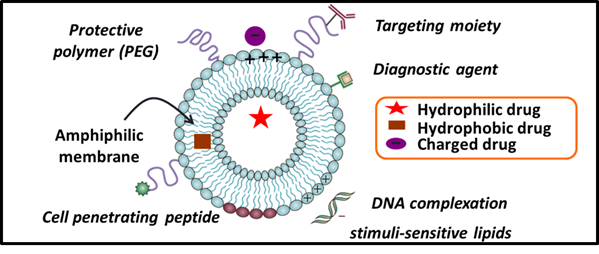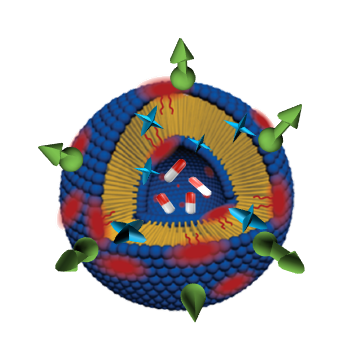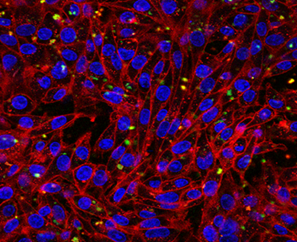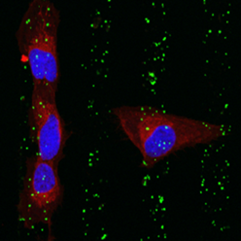Jaume Veciana's Research Interests
Nanomedicine
Our activities in this broad field are focused in two different sub-areas:
Molecular Materials for Tissue Engineering and Cell Therapies
Multifunctional Nanovesicles for Theranosis Applications
Research interests are focused in therapy and diagnosis applications of self-assembled supramolecular nano-objects, like vesicles, prepared by techniques based on compressed fluids. Activities addressed to therapy with such a nano-objects are two-fold. On one side we are interested in the development of novel kinds of nanovesicles, like quatsomes, or conventional liposomes to prepare multifunctional, targeted nanoconjugates for drug delivery. This research has led to novel nanomedicine candidates for the treatment of lysosomal deficient diseases, like Fabry and SanFilippo using enzymatic replacement therapies, and for curing diabetic feet ulcers and complex ulcers. Inside diagnosis applications several activities are currently in progress based mainly on the incorporation of fluorescent dyes or magnetic molecules (radicals or polyradicals) into nanovesicles for bioimaging purposes using optical (2PA and Fluorescence) and magnetic (MRI and DNP) techniques. Development of novel magnetic organic molecules, like radicals and polyradicals, as DNP polarizing agents and magnetic contrast agents are also investigated. Furthermore, the capability of nanovescicles to encapsulate/integrate two or more bioactive molecules together with fluorescent/magnetic probes enable their use for theranosis.
Research interests are focused in therapy and diagnosis applications of self-assembled supramolecular nano-objects, like vesicles, prepared by techniques based on compressed fluids. Activities addressed to therapy with such a nano-objects are two-fold. On one side we are interested in the development of novel kinds of nanovesicles, like quatsomes, or conventional liposomes to prepare multifunctional, targeted nanoconjugates for drug delivery. This research has led to novel nanomedicine candidates for the treatment of lysosomal deficient diseases, like Fabry and SanFilippo using enzymatic replacement therapies, and for curing diabetic feet ulcers and complex ulcers. Inside diagnosis applications several activities are currently in progress based mainly on the incorporation of fluorescent dyes or magnetic molecules (radicals or polyradicals) into nanovesicles for bioimaging purposes using optical (2PA and Fluorescence) and magnetic (MRI and DNP) techniques. Development of novel magnetic organic molecules, like radicals and polyradicals, as DNP polarizing agents and magnetic contrast agents are also investigated. Furthermore, the capability of nanovescicles to encapsulate/integrate two or more bioactive molecules together with fluorescent/magnetic probes enable their use for theranosis.
 |
 |
Molecular Materials for Tissue Engineering and Cell Therapies
 |
 |
Another line of research is addressed in the use of bioactive surfaces based on molecules, bistable supramolecular materials, polymers and in microfluidics for tissue engineering and cell therapy applications. One of the most attractive objectives pursued is to trigger the organization on surfaces of growth factors in a biomimetic way to understand and control the biochemical signals that direct cellular behavior towards vascular repair therapies and to generate vascular tissues. Inside therapy applications very recently a new line of research has been initiated which is addressed to the use of responsive molecule-based 2D and 3D scaffolds for T cell activation in Cancer Immunotherapy.






